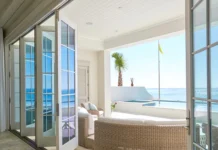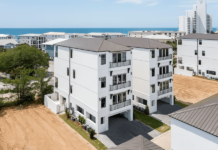By Chris Balzer

What does R-value mean? R-value measures insulation’s resistance to heat flow. It can also be referred to as “thermal resistance.” The higher the R-value, the greater the insulating power. All materials having the same R-value, regardless of type, thickness, or weight are equal in insulating power. Don’t forget that R-values are determined by material type, thickness, and installed weight per square foot, not by thickness alone. Insulation helps keep your home cool during the summer months and warm during the winter months.
How much will I save by adding insulation to the walls, ceilings and floors of my home? Insulation saves money, increases your home’s comfort and protects the environment by reducing energy use. According to the U.S. Department of Energy (DOE) shows that typically 44% of a homeowner’s utility bill goes for heating and cooling costs. DOE also states that homeowners may be able to reduce their energy bills from 10% to 50% by taking certain steps. One of the major steps is increasing the amount of thermal insulation in their existing homes or purchasing additional insulation when building new homes. Unless your home was constructed with special attention to energy efficiency, adding insulation will reduce your utility bills. The amount of energy you conserve will depend on several factors: climate, size, shape and construction of your house, your living habits, the type and efficiency of the heating and cooling systems and the fuel you use. Energy conserved is money saved and the annual savings increase when utility rates go up, which many of us are experiencing. Insulation upgrades also instantly adds value to your home and is a great investment. The Inflation Reduction Act of 2022 allows homeowners to claim significant tax credits for adding qualifying insulation products. Some projects qualify for 30% of the project up to $1,200. (Consult your tax professional for details)
How much insulation should I have? “Insulation,” says Bob Vila, is the most efficient energy-saving expenditure. Energy Star and ECES agree and recommend R-38 or about 10 to 14.5 inches, depending on the insulation type. Many homes we inspect are under-insulated, even new homes only meet the minimum requirement of R-30. If your insulation is below R-30 or if your insulation is just level with or below floor joists, you should add more insulation. Take the time to understand how much insulation you have by using a measuring tape or have a professional inspect your home and offer available options and savings.
What words should I watch out for in contracts or job estimates? Once you have chosen an insulation contractor, make sure the contract includes the job specification, cost and warranty information. The contract should list the type of insulation to be used and where it will be used. Make sure that each type of insulation is listed by R-value. Beware of any contract or verbal offering that quotes the job in terms of thickness only (e.g., “14 inches of insulation”). Remember, it is the R-value, not the thickness that tells how well a material insulates. Avoid contracts with vague language with the terms “plus or minus”; “+ or – “; “average”; or “nominal.” Also ask for before and after pictures. The installation team should be installing measuring sticks in the attic to determine the proper R-value.
Is there anything other than insulation to increase comfort and efficiency? There are several innovative materials in the market which are not widely used by most insulation contractors. ERG window film is a smart tint material which can be applied to glass and is virtually clear. This film block’s 65% of solar gain heat and 99.9% of UV rays protecting floors, furniture, you and pets from the damaging sun’s UV. Some common applications would be any room with direct sunlight; sunrooms, offices are great areas to add ERG films. Another great product is Radiant Barrier which is a reflective material installed in attic spaces which blocks 97% of radiant heat reducing your overall attic temperature by 40 to 50 degrees in the summer. By reducing your attics heat signature, you increase your comfort and your insulation and HVAC systems work less, saving you money and extending the life of HVAC systems. Radiant Barrier systems should be installed on rafters, just under your roof line and should not be installed lying on top of your insulation.
There are many ways to save energy and become more energy efficient. The first step is understanding where and how your home is losing energy and then taking steps to increase comfort and save money.
Chris Balzer is Founder and President of Emerald Coast Energy Solutions which is a Smile Provider Company. We provide smiles to our customers after installing our high energy efficient products, increasing comfort and lowering energy bills. For more information on how to save this summer and become energy efficient schedule an inspection by calling (850) 588-2870, visit www.trusteces.com or email wecare@trusteces.com and Beat the Heat.
Visits: 0






















































